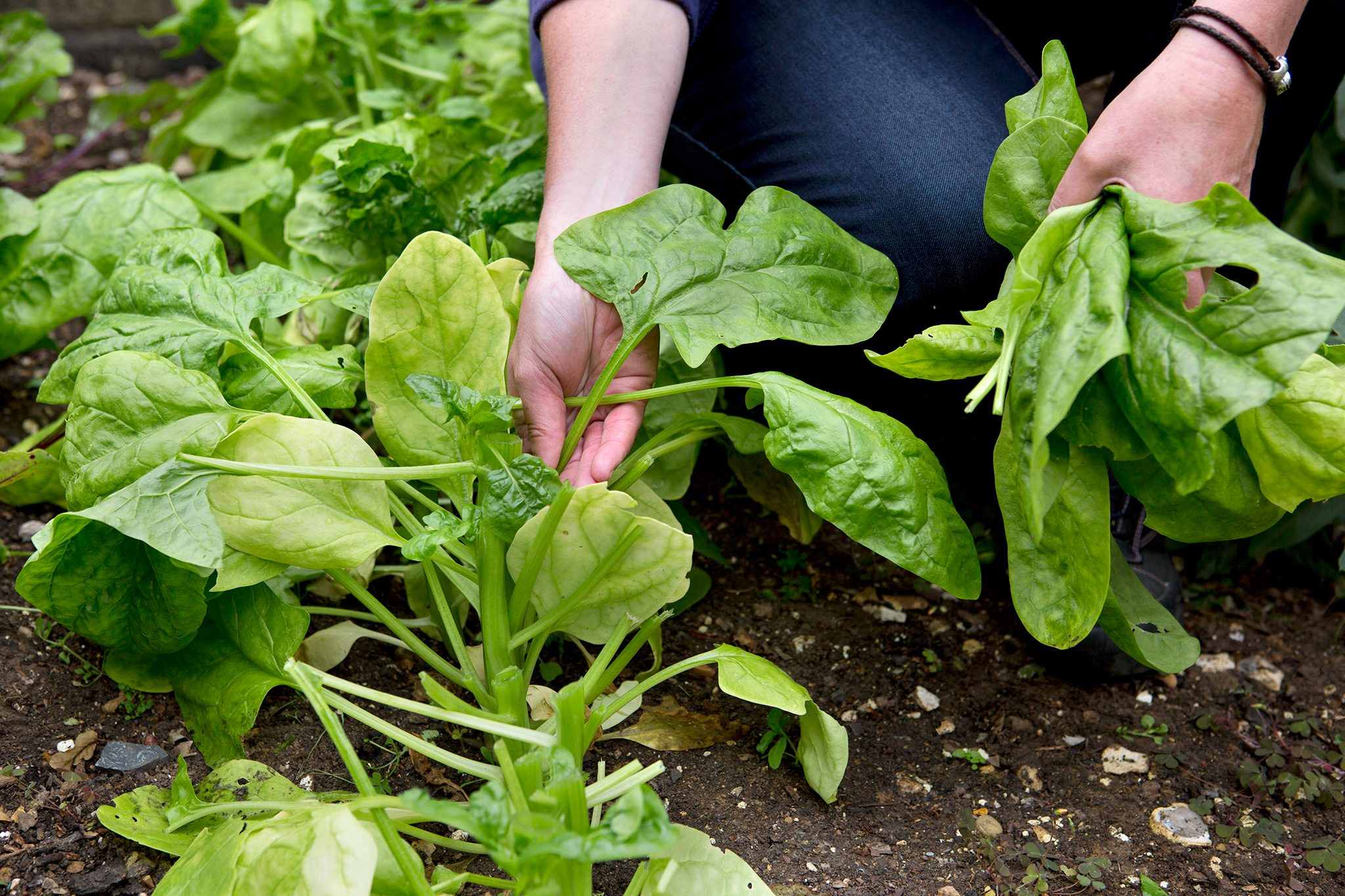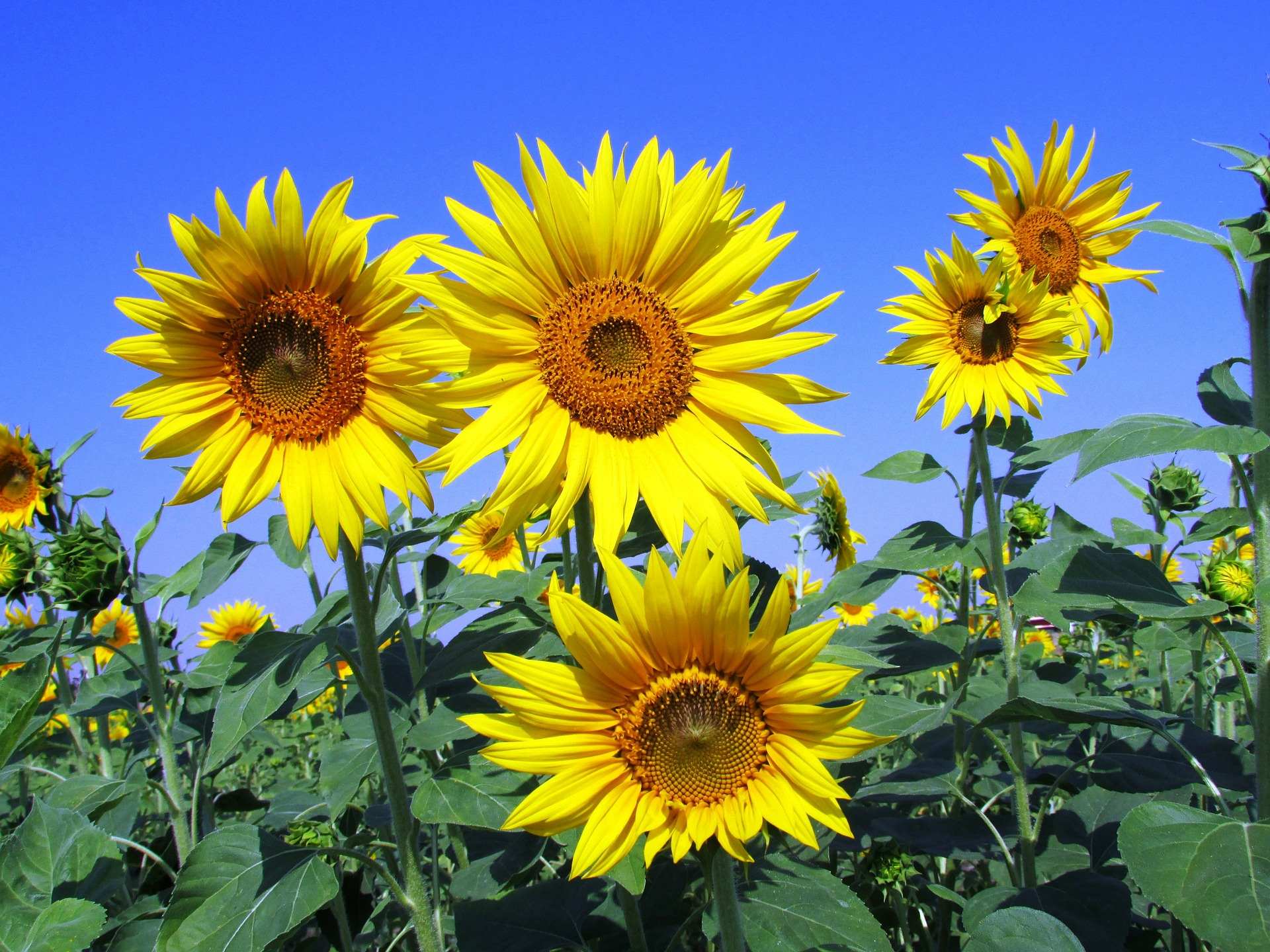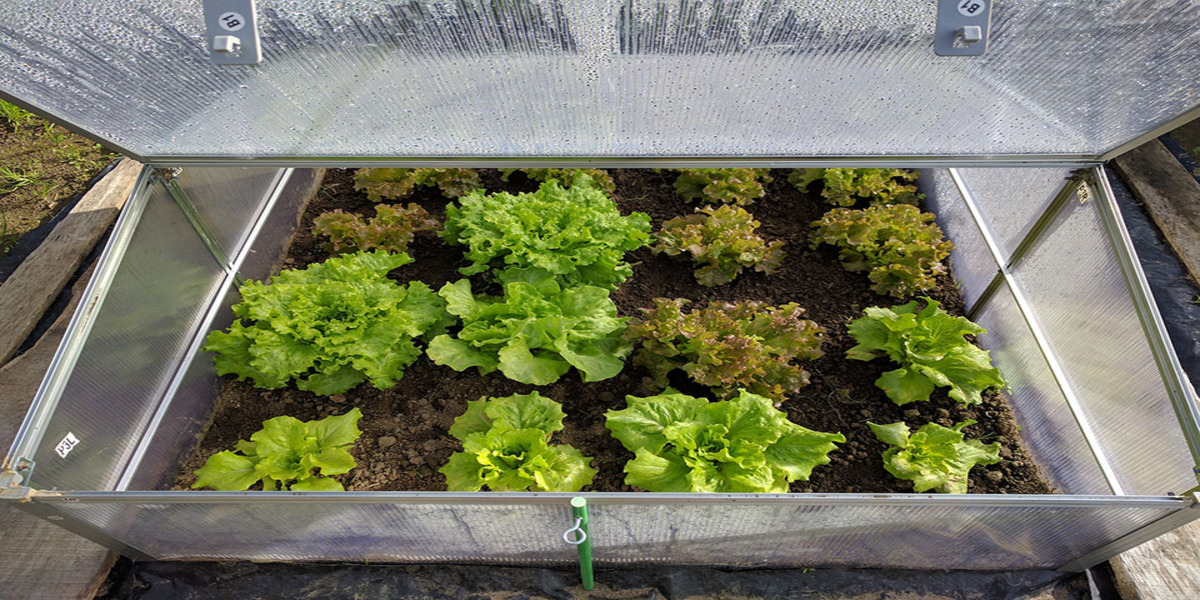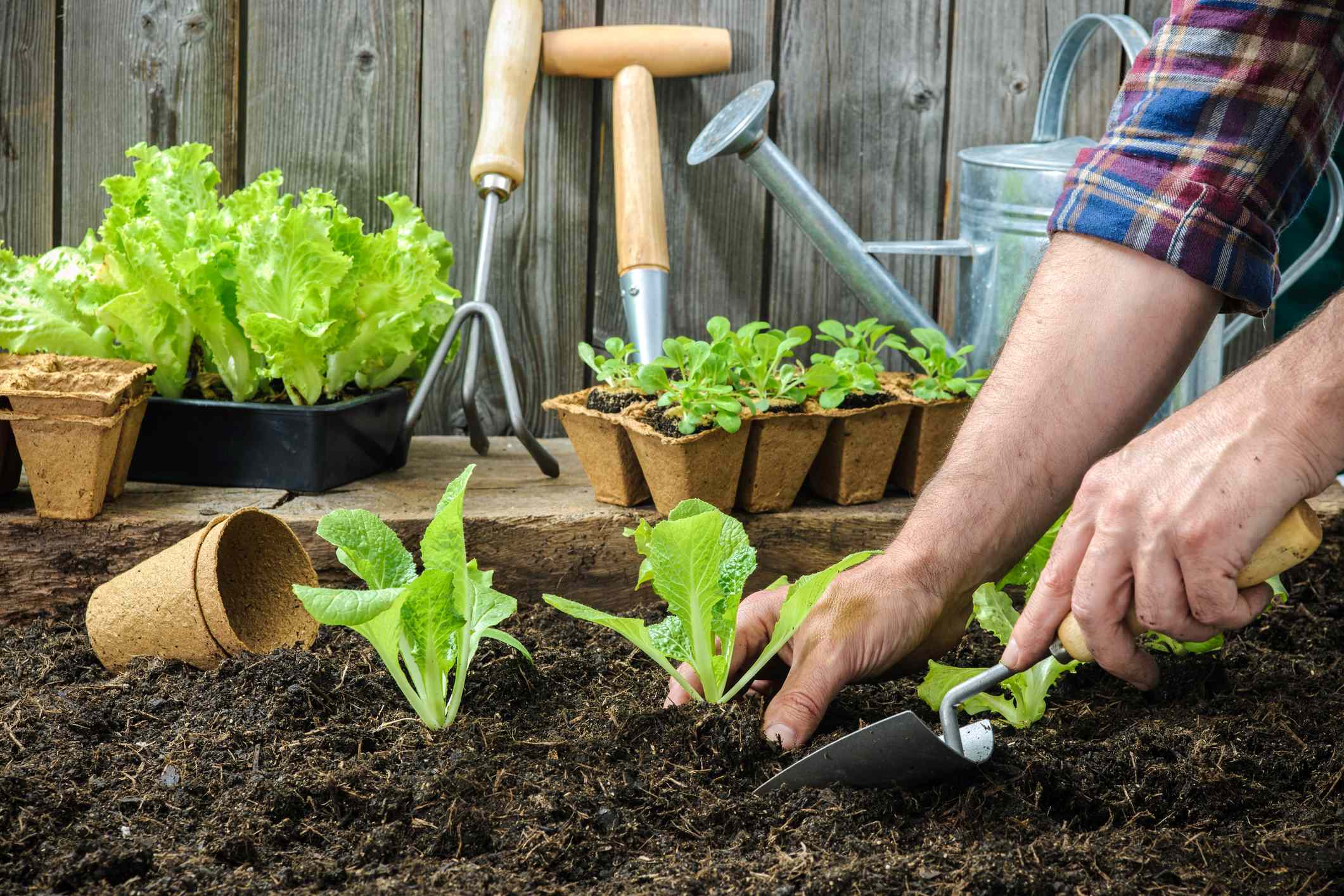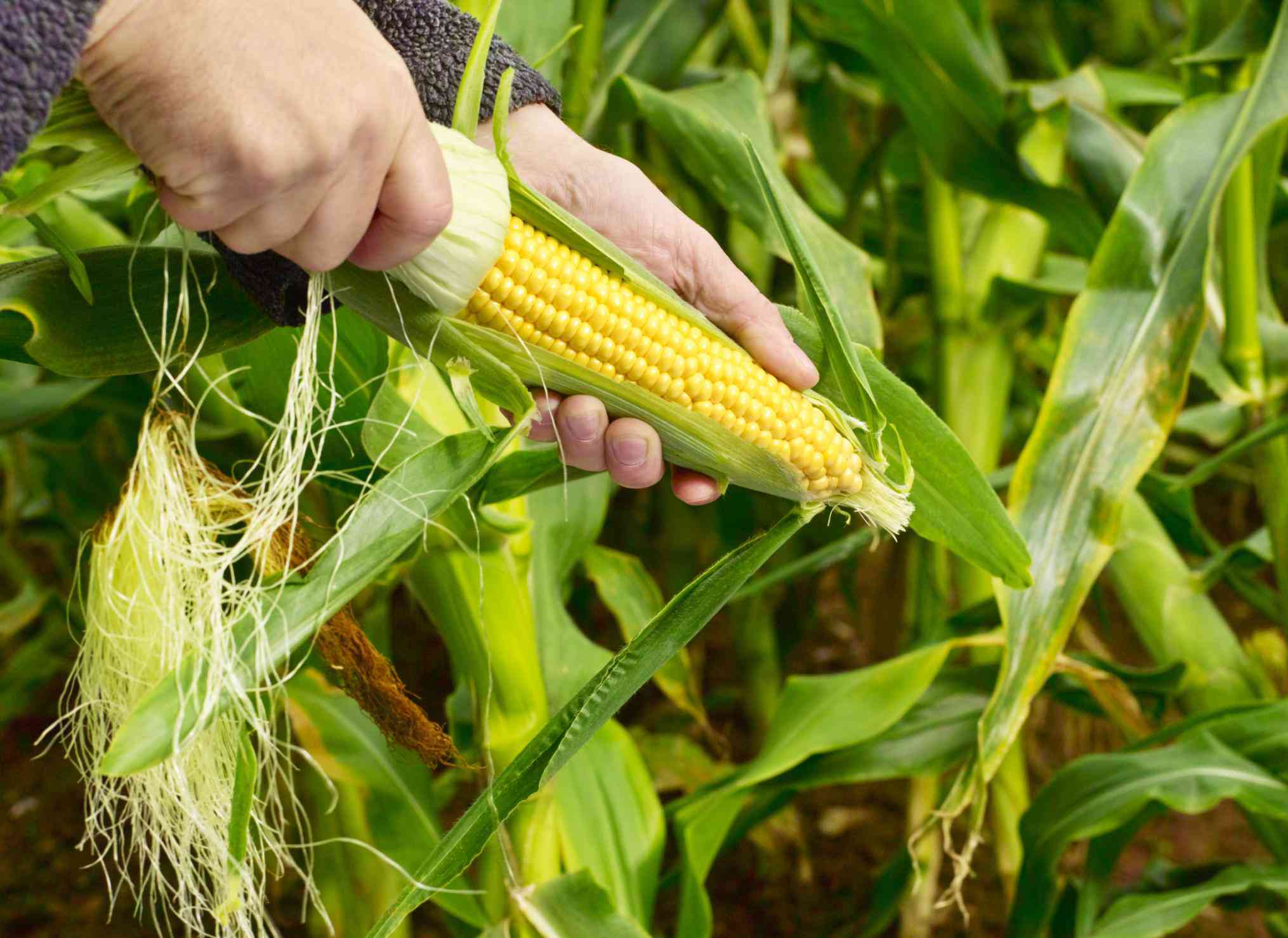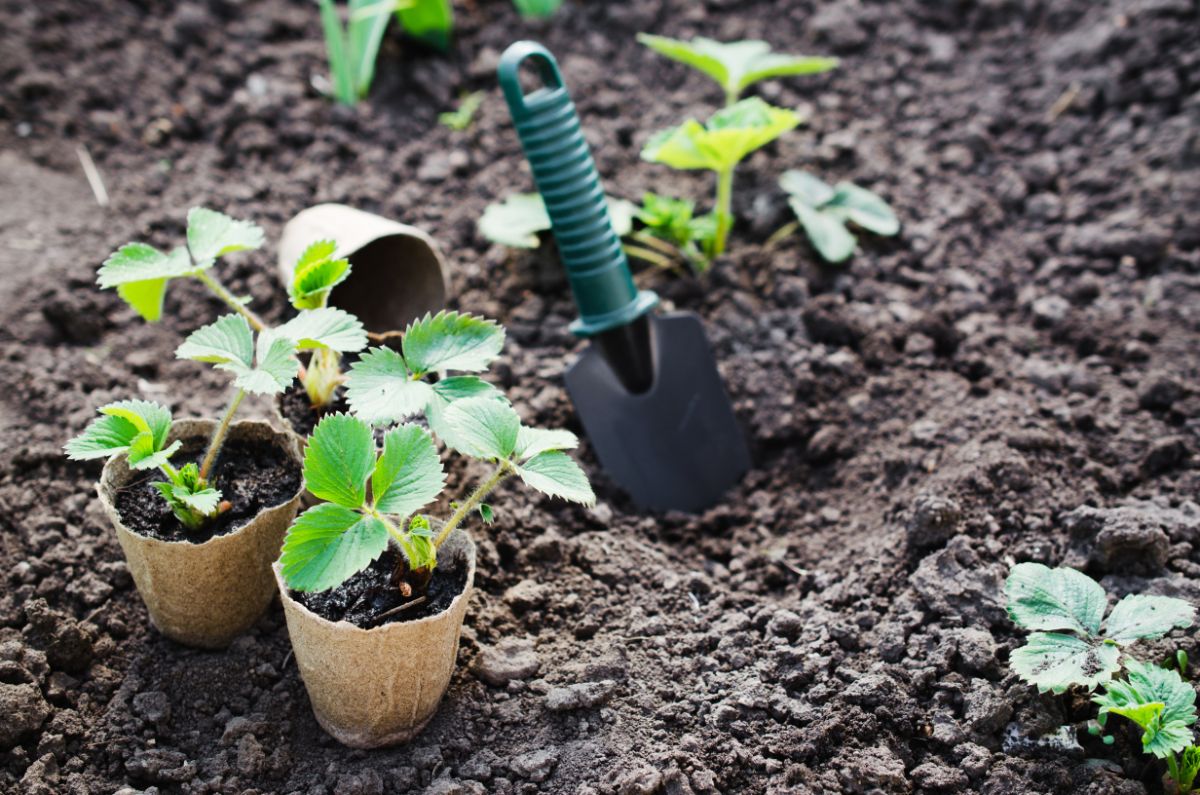Home>Types of Gardening>Edible Gardening>How Deep To Plant Lettuce Seedlings


Edible Gardening
How Deep To Plant Lettuce Seedlings
Published: January 5, 2024
Learn the optimal depth for planting lettuce seedlings in your edible garden. Find essential tips and techniques for successful cultivation.
(Many of the links in this article redirect to a specific reviewed product. Your purchase of these products through affiliate links helps to generate commission for Chicagolandgardening.com, at no extra cost. Learn more)
Table of Contents
Introduction
Welcome to the wonderful world of edible gardening! If you have a green thumb and a love for fresh, homegrown produce, then you’re in the right place. One of the most popular and rewarding vegetables to grow is lettuce. With its crisp leaves and a wide variety of flavors, lettuce is a versatile and nutritious addition to any kitchen garden.
When it comes to successfully growing lettuce, there are a few key factors to consider, such as soil depth, planting depth, and spacing between seedlings. Understanding these factors will help you ensure that your lettuce seedlings thrive and yield an abundant harvest. In this article, we will dive deep into the world of lettuce seedlings, exploring the optimal depths for planting and how to provide the best conditions for their growth.
Growing your own lettuce not only provides you with a fresh and organic food source, but it also allows you to personalize your salad mixes with a variety of unique and flavorful lettuce varieties. From crisphead and romaine to butterhead and loose leaf lettuces, the options are endless. So let’s dig in and learn how deep to plant lettuce seedlings to kickstart your journey to homegrown salads!
Factors to Consider
Before diving into the optimal depths for planting lettuce seedlings, it’s crucial to understand the key factors that affect their growth and overall success. By considering these factors, you can create the ideal environment for your lettuce to flourish:
- Climate: Lettuce is a cool-season vegetable and thrives in temperatures between 45°F and 75°F (7°C and 24°C). While lettuce can tolerate some heat, it tends to bolt (go to seed) quickly in high temperatures. So, it’s essential to choose the appropriate lettuce varieties that are suitable for your climate.
- Sunlight: Lettuce requires at least 6 hours of direct sunlight each day to grow vigorously. Find a spot in your garden that receives ample sunlight, but if you live in a hot region, consider providing some shade during the hottest part of the day to protect the lettuce from scorching.
- Soil Quality: Lettuce thrives in rich, well-draining soil. Before planting, amend your soil with organic matter such as compost, aged manure, or peat moss to improve its fertility and drainage. Ensure the soil’s pH level is between 6.0 and 7.0, as slightly acidic to neutral soil is ideal for lettuce growth.
- Watering: Consistent moisture is crucial for lettuce, as it prefers moist but not waterlogged conditions. Water your lettuce regularly, ensuring the soil remains evenly moist. Avoid overhead watering, as it can promote fungal diseases. Instead, use a soaker hose or drip irrigation to water at the base of the plants.
- Companion Planting: Consider companion planting with lettuce to deter pests or attract beneficial insects. Plants like basil, carrots, onions, and radishes make great companions for lettuce, helping to improve pest resistance and overall growth.
By taking these factors into account, you set the foundation for growing healthy and vibrant lettuce seedlings. Now, let’s explore the optimal soil and planting depths for your lettuce seedlings.
Soil Depth
The depth of the soil plays a vital role in the growth and development of lettuce plants. Adequate soil depth allows the roots to spread out, access nutrients, and establish a strong foundation. So, how deep should the soil be for your lettuce seedlings? Let’s find out:
Ideally, the soil depth for growing lettuce seedlings should be around 8 to 12 inches (20 to 30 centimeters). This depth provides enough space for the roots to grow and seek out water and nutrients. It also allows for good drainage, preventing waterlogged soil, which can lead to root rot and other moisture-related issues.
If your garden bed or container has shallow soil depth, don’t worry! You can still grow lettuce successfully by opting for varieties with smaller root systems and shallow root depth, such as loose leaf lettuce. These varieties are more adaptable to shallow soil conditions and can thrive in as little as 6 inches (15 centimeters) of soil depth.
Additionally, if your garden bed has compacted soil, it’s important to loosen it before planting lettuce. Use a garden fork or tiller to break up any compacted layers and incorporate organic matter, such as compost, to improve soil structure and drainage. Loose and friable soil allows roots to penetrate easily and facilitates nutrient absorption.
Remember, adequate soil depth is crucial for the overall health and productivity of your lettuce plants. Consider the depth of your garden bed or container and choose lettuce varieties accordingly to ensure optimal growth and yield.
Planting Depth
Planting lettuce at the correct depth is essential for proper germination and subsequent growth. Planting too shallow or too deep can lead to poor emergence or weak root development. So, how deep should you plant your lettuce seedlings? Let’s explore:
As a general guideline, lettuce seedlings should be planted at a depth of about ¼ to ½ inch (0.6 to 1.3 centimeters). The small size of lettuce seeds makes them light-dependent for germination. Planting them too deep can prevent them from receiving sufficient light to sprout.
When planting, make sure to create a small furrow or indentation in the soil using your finger or a small garden tool. Place the lettuce seeds into the furrow, following the recommended spacing for the variety you are planting. Lightly cover the seeds with soil, gently firming it down to ensure good seed-to-soil contact.
It’s important to note that lettuce seeds require a certain amount of darkness to germinate. So, if you’re concerned about the seeds being planted too deep, you can lightly sprinkle a thin layer of fine-textured soil or vermiculite over the seeds to provide darkness while still allowing some light to reach them.
Another factor to consider when planting lettuce seedlings is the temperature of the soil. Lettuce seeds prefer cooler soil temperatures for optimal germination. As a result, planting lettuce earlier in the spring or later in the fall when soil temperatures are cooler can yield better results.
By planting lettuce seedlings at the appropriate depth, you give them the best chance for successful germination and establishment. Always refer to the specific recommendations provided with your lettuce seed packet for guidance on planting depths.
Spacing between Seedlings
Proper spacing between lettuce seedlings is crucial for their healthy growth and ensures they have enough room to develop and access sunlight, water, and nutrients. The spacing requirements can vary depending on the lettuce variety and your gardening goals. Here are some guidelines to help you determine the appropriate spacing for your lettuce seedlings:
For loose leaf lettuce varieties, which are popular for their continuous harvest, the ideal spacing between seedlings is typically around 6 to 8 inches (15 to 20 centimeters) apart. This wider spacing allows the plants to develop a larger leaf canopy, providing ample airflow and reducing the risk of diseases.
Crisphead and romaine lettuce varieties, on the other hand, generally require more space as they form larger heads. Aim for a spacing of about 12 to 16 inches (30 to 40 centimeters) between the seedlings to allow their heads to expand fully without competition.
When planting lettuce in rows, leave approximately 12 to 18 inches (30 to 45 centimeters) between rows to provide enough space for easy access, watering, and maintenance. The wider spacing also enhances air circulation, reducing the risk of fungal diseases.
If you’re growing lettuce in containers or raised beds, consider planting them in a staggered pattern, allowing for adequate space between each plant to promote healthy growth.
Remember that overcrowding lettuce seedlings can lead to competition for resources, stunted growth, and increased susceptibility to pests and diseases. Proper spacing encourages vigorous growth, good air circulation, and allows you to easily harvest leaves without damaging neighboring plants.
Ultimately, the recommended spacing between lettuce seedlings may vary depending on the specific variety and your personal preferences. Take into account the final size of the lettuce plant and refer to the instructions provided by the seed supplier for specific spacing guidelines.
Tips for Planting Lettuce Seedlings
Planting lettuce seedlings can be a rewarding and enjoyable experience. To ensure optimal growth and a bountiful harvest, here are some helpful tips to keep in mind:
- Start with healthy seedlings: Choose healthy lettuce seedlings from reputable nurseries or start your own from seeds. Look for seedlings with vibrant green leaves and a strong root system.
- Prepare the soil: Before planting, prepare the soil by adding compost or aged manure to enhance its fertility and drainage. Remove any weeds or debris that may compete with the lettuce seedlings for nutrients and water.
- Water thoroughly: Give your lettuce seedlings a good soak before transplanting them into the garden. This helps hydrate their roots and minimizes transplant shock.
- Time your planting: Lettuce can be grown in both spring and fall, as long as you consider the appropriate planting dates for your region. Avoid planting lettuce in the peak of summer heat, as high temperatures can cause the plants to bolt quickly.
- Protect from pests: Use organic pest control methods like companion planting, row covers, or organic insecticides to protect your lettuce from common pests such as aphids, slugs, and snails.
- Mulch: Apply a layer of organic mulch around the lettuce seedlings to help retain moisture, suppress weed growth, and regulate soil temperature. Mulching also helps to prevent soil splashing on the leaves, reducing the risk of soil-borne diseases.
- Provide shade: If you live in a hot climate, consider providing some shade during the hottest part of the day to protect your lettuce seedlings from heat stress. Shade cloth or tall plants can help to create some shade and prevent the lettuce from wilting.
- Water consistently: Keep the soil consistently moist but not waterlogged. Water your lettuce seedlings regularly, especially during periods of dry weather. Avoid overhead watering to reduce the risk of foliar diseases, and aim to water at the base of the plants.
- Harvest leaf lettuce regularly: For continuous harvests, pick outer leaves from loose leaf lettuces when they reach the desired size. This encourages the plant to produce new leaves and prolongs the harvest period.
By following these tips, you’ll set your lettuce seedlings up for success, ensuring healthy growth, and a plentiful harvest of fresh, homegrown greens.
Conclusion
Growing lettuce seedlings in your edible garden is a delightful way to enjoy the bounties of nature and indulge in fresh, crispy salads straight from your backyard. By considering factors such as climate, sunlight, soil quality, watering, and companion planting, you can create the ideal conditions for your lettuce to thrive.
Understanding the importance of soil depth and planting depth is crucial for the success of your lettuce seedlings. Providing adequate soil depth ensures the roots have enough space to grow and access nutrients, while planting at the correct depth allows for proper germination and establishment.
Spacing between lettuce seedlings is another vital consideration to ensure healthy growth and prevent overcrowding. Proper spacing allows each plant to access sunlight, water, and nutrients without competition, reducing the risk of stunted growth and pest and disease issues.
When planting lettuce seedlings, follow helpful tips such as starting with healthy seedlings, preparing the soil, timing your planting, protecting from pests, and providing consistent watering. These practices will maximize the growth and productivity of your lettuce plants.
So, embrace the joy of edible gardening and take advantage of the versatility and nutritional benefits of growing lettuce. With a little care and attention, you can cultivate a thriving lettuce garden and enjoy the bounty of fresh, homegrown lettuce in your salads, sandwiches, and more!

